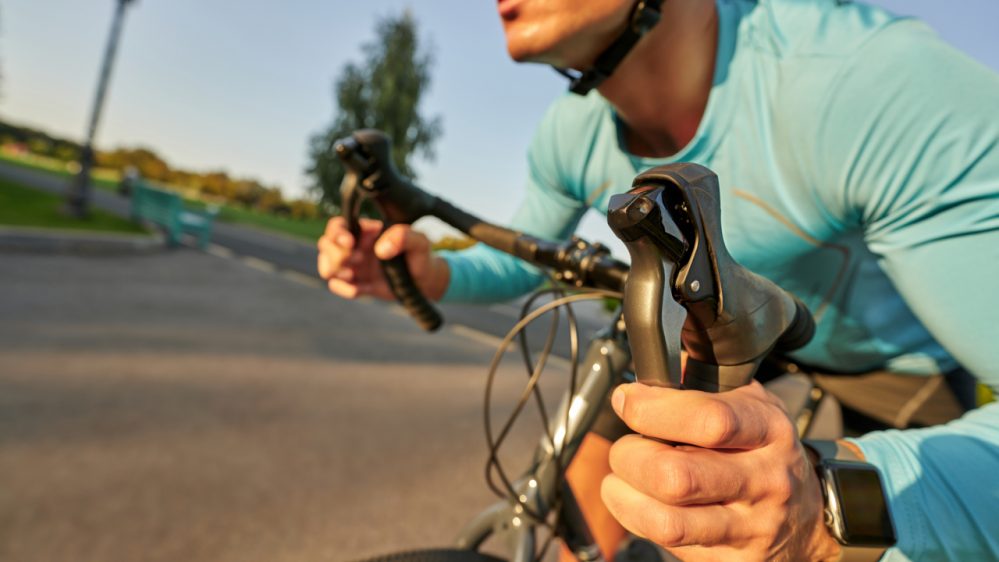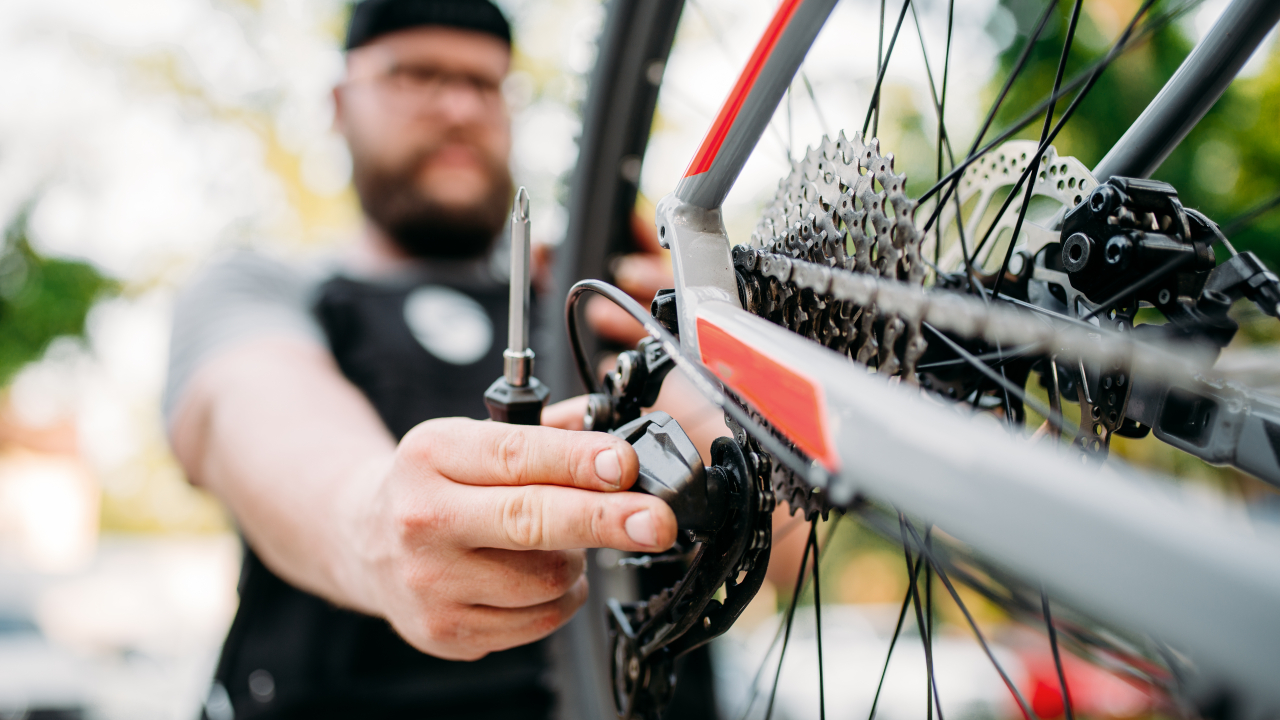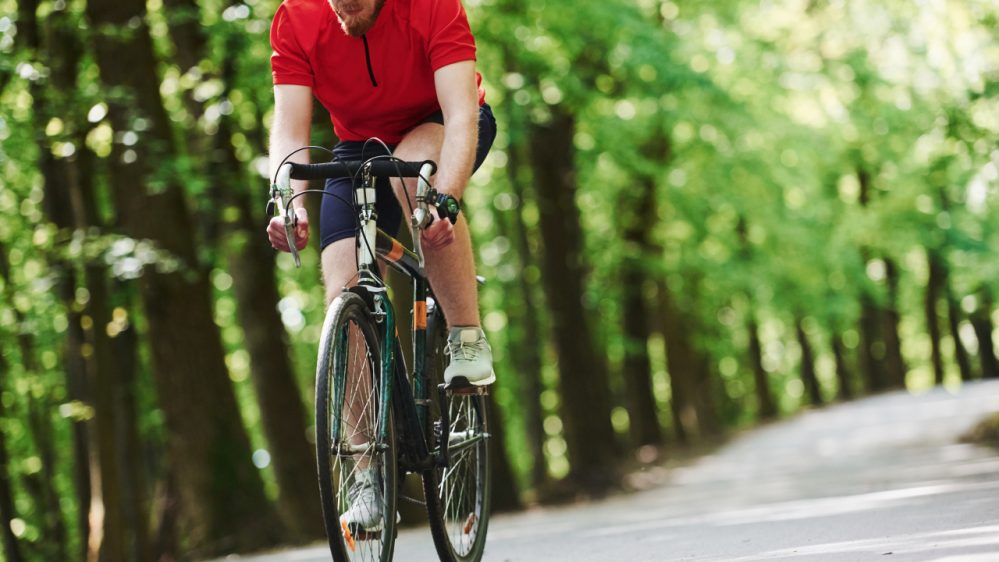Shifting (also known as changing gears) is the key to riding comfortably and effectively, whether climbing and descending, riding along flat stretches with excellent tailwinds, pedaling for fun, or aiming for glory. And because new bicycle shifters enable you to change gears nearly so quickly, shifting is now more effective and enjoyable than ever.
There is no “right” or “wrong” gear. You shift based on how you feel. As the terrain varies, you adjust the levers to make pedaling easier or more difficult, based on what feels appropriate. If you don’t know how to change gears on a bike, we have created a short guide that covers all you need to know about shifting bike gears.
What Are Gears and How Do They Work?
Gears make transferring power from one component of a machine to another possible. On a bicycle, for example, gears through a chain transfer power from the pedals to the back wheel. The job of the gearing system on your bike is to help you make the most of your muscle power. When choosing the desired gear, you select the amount of effort necessary for each pedal stroke. But how do bike gears work?
Gears are wheels with teeth that interlock. When one gear is turned, the other one also turns. A chain is usually used to connect the gears on a bicycle. The pedal turning force is transferred through the chain.
If the gears are of different sizes, they can be used to enhance the turning force’s power. The smaller wheel spins faster but with less power. In contrast, the larger one turns more slowly and with greater power.
Why Do You Need to Shift Gears?
If you’re new to cycling, shifting gears on a bike might seem puzzling, and it may seem like an option to avoid. But you won’t get very far if you don’t use your gears.
Bikes feature multiple gears that allow you to pedal comfortably regardless of the terrain, making your rides more effortless and enjoyable. And that is simply the reason why you need to shift gears.
How to Change Gears: Types of Shifts

Keep reading if you are struggling with it and still haven’t found the best method to shift gears on a bike. Down below, you will be able to find some helpful tips that will help you master this thing.
Thumb shifter
We will give you a guide on how to change gears on a mountain bike for beginners. Mountain bikes are generally equipped with thumb shifters. This shifter is usually installed on straight handlebar cycles, right next to the brake levers. Thumb shifters use two levers to switch between higher (harder) and lower (easier) gears.
The thumb shifter on the right side of the handlebar will be mainly used because it changes the sprocket on the cassette. To shift into a higher gear, you utilize the bigger thumb-shifter lever closer to you. To change gears, you operate with the tiny lever hidden underneath the bigger lever.
Twist shifter
Shifting the right twist shifter controls the rear derailleur and moves the chain to the various cogs in the rear. You twist it forward and backward in the following order:
When it becomes too difficult to pedal, and you want to change into a lower gear, twist the shifter back. It clicks as you twist, and the movement moves the rear derailleur, shifting the chain into the next larger rear cog, making pedaling easier.
When you feel like you’re pedaling too quickly and want to go for a tougher gear, twist the shifter forward. It clicks as you twist, and the movement moves the rear derailleur, which changes the chain to the next smaller rear cog, making pedaling more difficult.
Integrated shifter
Integrated levers integrate shifters and brake levers into a single system. The brake is activated when you pull the lever towards the bar. The derailleur is activated by pushing the lever or paddle to the side. Integrated shifters are always “indexed” and were designed for 7- to 11-speed transmissions.
Tips for Better Shifting

Shifting gears is an underrated cycling skill. Even with technological developments, such as electronic shifting, deciding when and how to shift remains a vital component of performance. The gears you choose and the timing of your gear shifts can significantly impact your cycling success. Here are some extra tips to make your shifting experience smoother and more pleasant:
Pedal while shifting
Do you shift gears while pedaling? Simply yes! Although you must be pedaling to shift, you should release some of the pedal pressure at the same time. This is simple when you’re moving downhill or through flat terrain, but as you approach an incline, you’ll need to be aware of the need to shift, pedal a few times to get some momentum, and then reduce your pedal power and change into the easier gear.
Use one shifter at a time
Don’t shift the front and rear shifters simultaneously because that would complicate the process. For major changes, keep in mind to move the chain between the front chainrings, then use the rear cogs to fine-tune your gear setting.
Anticipate the terrain

It would help if you shifted to an easier gear on hills (climbs) or when riding into the wind. Use a harder gear on flats or when the wind is coming from behind. When in doubt, shift ahead of the terrain, especially on hills. Don’t wait to swap gears until you feel the hill kick in; instead, shift gears in anticipation of the incline.
Only shift 1 to 2 gears at a time
As you are biking, your body gets used to the motions. Your legs should gradually get used to the differences between gears. Shifting only 1 to 2 gears at a time will save you from hurting your legs; otherwise, if there is a significant gap in the shifting, you will face problems such as leg cramps.
And on the other hand, you don’t want to overload your bike system. So yes, only shift 1 to 2 gears at a time.
Keep your system maintained
You also want to ensure your gears work perfectly. Clean and well-maintained bike gears will enable much smoother shifts and rides. Always make sure to clean and grease the inner cable, the front mechanicals, the rear mechanicals, and the cassette. Don’t open yourself up to potentially dangerous situations by failing to care for your gears.
Conclusion
That is everything you needed to know! Now, with some practice, you’ll shift like a pro and enjoy biking more than ever. If you’re unfamiliar with cycling, changing gears on a bike may seem confusing, but don’t make the mistake of not using them because you will be faced with unpleasant and challenging cycling experiences. Use the shifter according to the types explained and consider those extra tips; lastly, hop on and enjoy the ride.
Shifting is fun! Good cyclists are constantly shifting to keep their effort steady and easy, and you should, too. And remember that you can’t hurt the bike by shifting it!




